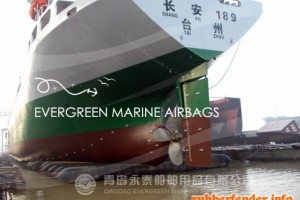In some big vessel salvage works, salvage marine airbags are often used to offer buoyancy to make up the shortage of lifting capacity from barge crane. Salvage airbags can be attached to shipboard or stuff into cabins to offer buoyancy assistance. People should control the lifting speed to allow airbags have enough time to vent expanding air by over-pressure valves. Generally the lifting speed is controlled at 1 meter per minute.
In some caisson launch projects salvage airbags have been proved to be very helpful. In the past when the water level at launch way end is not deep enough people will have to build caisson for the second time after the caisson bases are launched. With marine salvage airbags people can add extra buoyancy to the launched caisson to ensure its safe floatation.
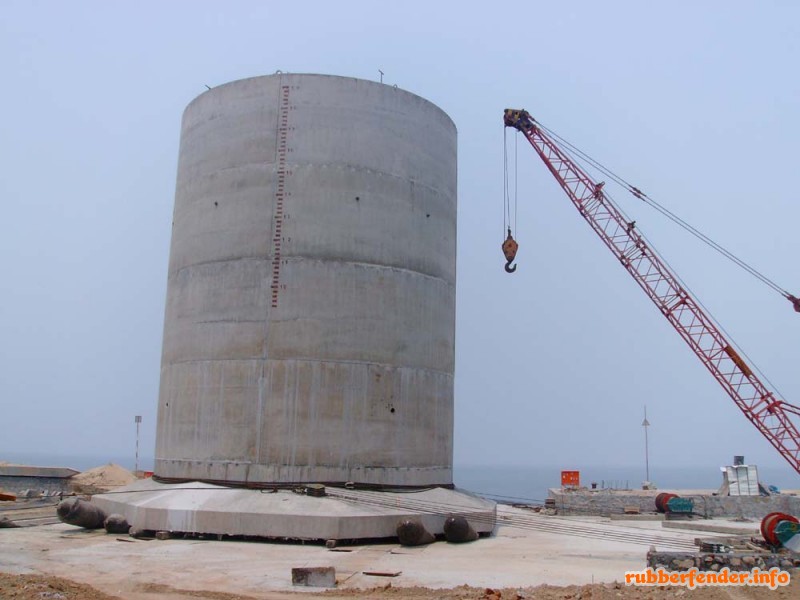
The design of salvage airbag binding method varies for different projects. Also it is very important for the success of salvage. The length and material of binding belts should be decided by calculation. Rubber belts are often used to bind salvage airbags together and nylon ropes are found to be good to fix airbags to objects. Knitted net with good selected nylon ropes is preferred when people want to assemble airbags to refloat objects.
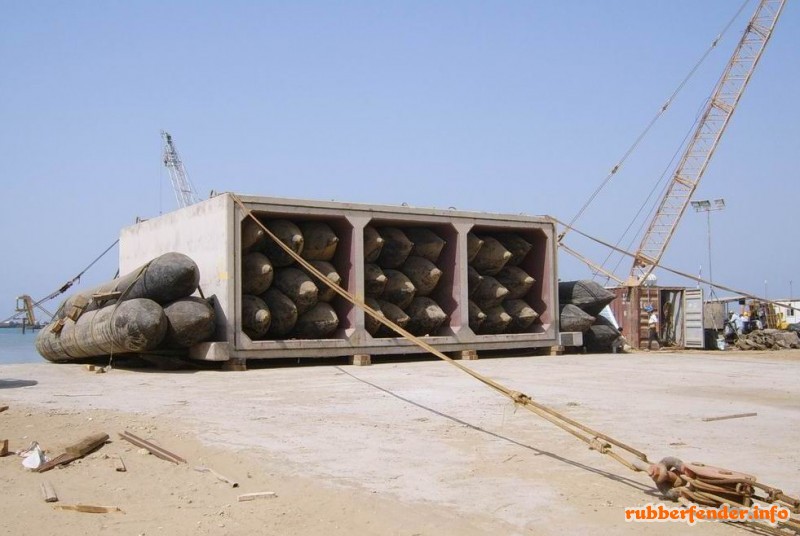 Salvage marine airbags can be inserted between vessel bottom and seabed to lift sunk vessel which can partly restore buoyancy of vessel itself. Each salvage marine airbag can lift more than 200 tons heavy under the water. For stranded vessel salvage this heavy lift function is extremely useful.To send a stranded ships back to water marine airbag is the most convenient tool. People can insert airbags to the bottom of vessel and then inflate them. With the pull of a tugboat or push of a bulldozer, ship can easily move into water with the roll of airbags.
Salvage marine airbags can be inserted between vessel bottom and seabed to lift sunk vessel which can partly restore buoyancy of vessel itself. Each salvage marine airbag can lift more than 200 tons heavy under the water. For stranded vessel salvage this heavy lift function is extremely useful.To send a stranded ships back to water marine airbag is the most convenient tool. People can insert airbags to the bottom of vessel and then inflate them. With the pull of a tugboat or push of a bulldozer, ship can easily move into water with the roll of airbags.
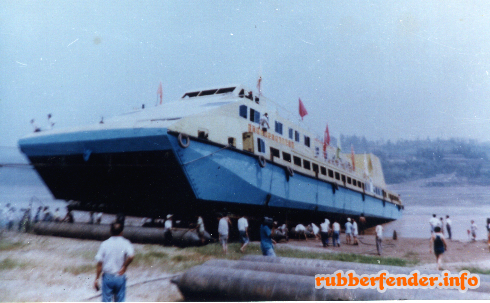 Pic1.The 230' tank barge sitting high and dry 60 feet from the shoreline Pic2. The marine airbags are placed under the barge Pic3. Creating a ramp/launch-way for refloating the barge Pic4.With pull of a tug barge enter into water riding salvage airbags
Pic1.The 230' tank barge sitting high and dry 60 feet from the shoreline Pic2. The marine airbags are placed under the barge Pic3. Creating a ramp/launch-way for refloating the barge Pic4.With pull of a tug barge enter into water riding salvage airbags
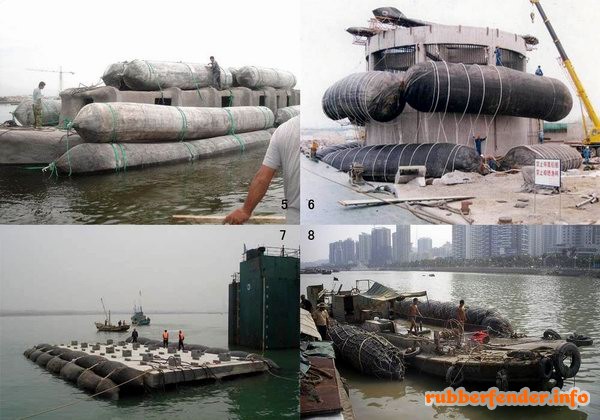 Pic5 Sunken vessel refloat by salvage airbags Pic6 Salvage airbags for cylindrical caisson launch float Pic7 Salvage airbags for caisson transport float Pic8 Air lifting for sunken fish vessel
Pic5 Sunken vessel refloat by salvage airbags Pic6 Salvage airbags for cylindrical caisson launch float Pic7 Salvage airbags for caisson transport float Pic8 Air lifting for sunken fish vessel


